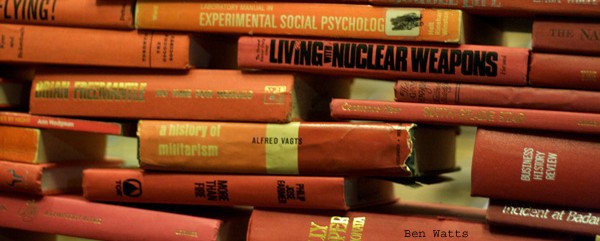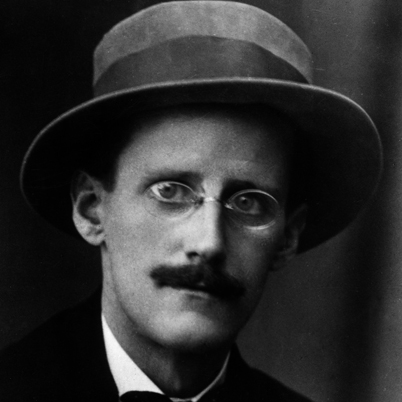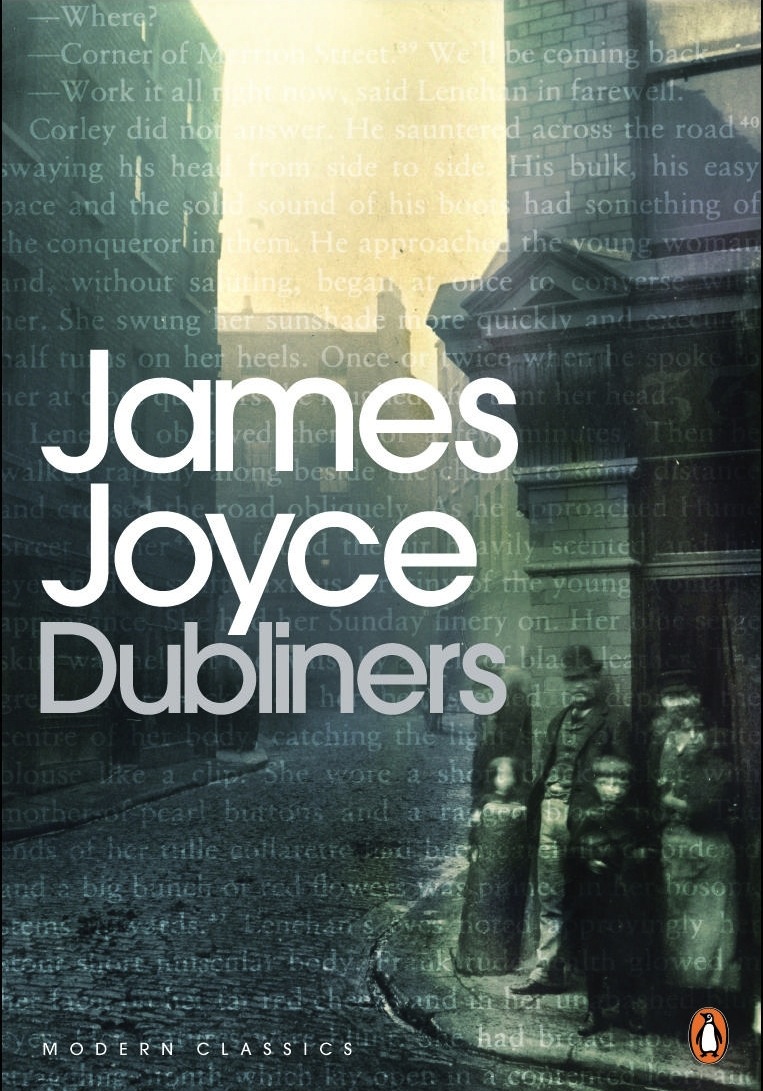
photo by ben watts
James Joyce and Dubliners
by Mike Smith
There are two obstacles to James Joyce’s reputation as a short story writer. One is that he wrote only 15 short stories, gathered together and published early in his career as Dubliners. The other is that these stories stand in the shadow of his two great novels, Ulysses and Finnegan’s Wake.
Joyce’s collection struggled to find a publisher, and was not an instant success. Having taken a decade to get it published he waited eight years for a reprint. Yet in The Modern Short Story, H.E. Bates is quite clear that Joyce’s ‘reputation could safely stand’ on Dubliners alone. It was both content and form that held it back from popular acclaim, and commercial publication. Instead of being led, or driven, by authorial enthusiasm this writing told of flawed individuals who failed to rise to traditional heroics.
Joyce’s characters in Dubliners are the basis for those who populate his subsequent novels, but the stories are more than just thumbnail sketches of personas to be developed later. This is a sequence of stories. It has a definite starting place, and takes a definite route to an identifiable destination, with the focus firmly on the characters. The stories are largely seen through their eyes, and told in their voices, (much as the later novel Ulysses is seen and told through the eyes and languages of Stephen, Bloom and Molly). Beginning with child narrators, Joyce moves through adolescents, to adults, and the stories lift their themes from the purely personal to the great public structures of State and Church – the nets which Joyce said, in the voice of Stephen Daedalus, that he would ‘fly by’.
 The opening story, ‘The Sisters’, has an almost claustrophobically tight viewpoint, emphasised by its first person perspective. ‘An Encounter’, from a similar point of view, opens out a little, by virtue of its setting in the open air, and ‘Araby’, completing a trio of child-centred first person narratives, takes us on another journey into a slightly wider world. It is into this wider world that the next half dozen stories take us, with third person narratives that both distance from and elevate us above the action, yet they are still essentially ‘private stories’ of internal struggles – one to one engagements, and small, intimate groups. With ‘A Painful Case’, a public perspective edges in, the protagonist re-evaluating his Pyrrhic affair with a woman whose suicide has made the papers. After this it is public life, and the life of the city, that dominates the stories, leading to the overtly political ‘Ivy Day in the Committee Room’, and the specifically Roman Catholic ‘Grace’.
The opening story, ‘The Sisters’, has an almost claustrophobically tight viewpoint, emphasised by its first person perspective. ‘An Encounter’, from a similar point of view, opens out a little, by virtue of its setting in the open air, and ‘Araby’, completing a trio of child-centred first person narratives, takes us on another journey into a slightly wider world. It is into this wider world that the next half dozen stories take us, with third person narratives that both distance from and elevate us above the action, yet they are still essentially ‘private stories’ of internal struggles – one to one engagements, and small, intimate groups. With ‘A Painful Case’, a public perspective edges in, the protagonist re-evaluating his Pyrrhic affair with a woman whose suicide has made the papers. After this it is public life, and the life of the city, that dominates the stories, leading to the overtly political ‘Ivy Day in the Committee Room’, and the specifically Roman Catholic ‘Grace’.
Perhaps not only because of these developing narrative perspectives and themes, the style of the writing becomes more Joycean as the sequence continues, so that by the time we come to ‘Grace’ one could almost imagine we were reading Ulysses, or at least A Portrait of the Artist as a Young Man:
The light of the lamps of the church fell upon an assembly of black clothes and white collars….
~ from ‘Grace’
The candles on the high altar had been extinguished but the fragrance of incense still floated down the dim nave.
~ from A Portrait of the Artist as a Young Man
The coffin lay on its bier before the chancel, four tall yellow candles at its corner.
~ from Ulysses
In a sense ‘Grace’, the fourteenth story, is the end of the collection – it was the last in the original sequence – but there is another story yet to come in the published version, one that is longer than the others, and one which adds to those developments in narrative voice and theme. The deeper development that has something to do with the burden of imagination, of meanings in layer upon layer. It is, in a way, the missing link between the short stories and the novels to follow. It is perhaps even the conceptual breakthrough that enabled Joyce to go on and write those novels. This is the story called ‘The Dead’.
The writing style is bare and sparse. Joyce’s technique is to isolate, as in a spotlight, pools of detail, beyond which the largely undescribed full scene is implied. The extract below is typical of the vignettes that run through this story:
The raisins and almonds and figs and apples and oranges and chocolates and sweets were now passed around the table, and Aunt Julia invited all the guests to have either port or sherry. At first Mr Bartell D’Arcy refused to take either, but one of his neighbours nudged him and whispered something to him, upon which he allowed his glass to be filled. Gradually as the last glasses were being filled the conversation ceased.
Hemingway ran with this style a generation later, adding a terseness and making his sentences shorter. Frank O’Connor, in The Lonely Voice: A Study of the Short Story, says that ‘Joyce was the most important single influence on Hemingway’. What were the influences on Joyce though? Are there any precedents for, or predecessors of, those Dubliners?
George Moore springs to mind. Moore had already published Esther Waters, seen at the time – 1894 – as ground-breaking, for having a woman of the lower classes as its heroine. ‘James Joyce’s admitted indebtedness to The Untilled Field is well known’, the editors of In Minor Keys remind us. The Untilled Field, probably George Moore’s best known collection of short stories, was published in 1903. Dubliners began its long progress towards publication in 1905. In his biography of Moore, Adrian Frazier comments that Joyce made use of a scene from Moore’s novel Vain Fortune – the scene is that which ends the last story in Dubliners.
H. E. Bates says of the story ‘The Dead’, that it is ‘without doubt the greatest that ever came out of Ireland’. It is longer than the others, undoubtedly greater, and opens up the collection to a wider world than the city of the title. The technique here is different to that of the preceding stories, the characterisation more subtle, and the symbolic layering predictive of what will follow in the novels. That the two dominating male characters – Gabriel Conroy and Michael Furey – are named for the greatest of the Angels, is, as Lenin said, no accident!
Joyce was developing a theory that stories carried with them moments of epiphany, or revelation. The revelations in ‘The Dead’ are for both Gabriel, and for us; they strike at the personal level for the character, and at the conceptual level for the wider readership. Both Joyce and Moore were interested in what is revealed by what is presented, without the author having overtly pointed it out. They were well aware though, that it was authorial technique that would create the opportunity for such presentations.
It was this technique that Hemingway built upon, and Frank O’Connor analyses it in his book in chapters both on Joyce and on Hemingway. Reading and writing about the short story form, it becomes apparent that individual writers, however isolated they may appear to have been, are difficult to understand and appreciate except in relation to the writing that surrounds them. The more we know, I suspect, the greater that entanglement.
O’Connor refers to Joyce’s technique (and Hemingway’s) as ‘simplification and repetition’, and we get a tremendous example of it at the end of ‘The Dead’. I won’t reproduce the whole paragraph, but I will point out that the verb participle ‘falling’ is used seven times in the eight-sentence last paragraph. There are also two ‘reversals’ in which the verb-adjective cluster is turned around and repeated within a single sentence… Snow was falling:
It was falling on every part of the dark central plain, on the treeless hills, falling softly upon the Bog of Allen and farther westward, softly falling into the dark mutinous Shannon waves.
 The play of vowels and consonants, the metrical arrangements of longer and shorter phrases, that reversal, those repetitions, give this closing paragraph a poetic, musical cadence. The sentence sounds like the waves it ends upon. It is creating a mood that is as important as its meaning. Yet its meaning is carried by words that are essentially everyday words. Bates says of it that it contains ‘no word [….] that a child of ten could not understand, no picture that it could not assimilate.’
The play of vowels and consonants, the metrical arrangements of longer and shorter phrases, that reversal, those repetitions, give this closing paragraph a poetic, musical cadence. The sentence sounds like the waves it ends upon. It is creating a mood that is as important as its meaning. Yet its meaning is carried by words that are essentially everyday words. Bates says of it that it contains ‘no word [….] that a child of ten could not understand, no picture that it could not assimilate.’
Simplification and repetition. Form and content. Action and moral guidance. Epiphany, and the reader has to pay attention, to listen to the music of the lines, as well as comprehending them.
Reading what I have written I suddenly wonder how original Joyce is, if we project him onto the wider stage than that of Irish, or indeed English literature. For, even in translation, does not Chekhov offer us some of the very same? Of course reading in translation we must be less sure of our ground, but Chekhov wrote of the lower classes too. He wrote stories, hundreds of them, that are dismissed by some and cherished by others for their apparent ‘lack of action’. A Chekhov story tells you what is happening, and it is often not a lot: a journey, an encounter, an exchange of words; an awareness, on the part of one of the characters, or on the part of the reader that might come suddenly, or might imperceptibly imbue the story with new meaning. In short, an epiphany of sorts.
Chekhov, like Moore, was at the height of his powers while Joyce was up and coming. Joyce, like all other writers, was a product of his time, and of his past, and of what he knew of both those worlds. Joyce was a linguist and a European. He was aware of his antecedents and his contemporaries, and, perhaps more importantly, he had a strong sense of self. It is his city that is presented, not only in the short stories, but in the novels that followed. Yet, had he not gone on to create those novels, it is likely that he would still be accounted a great writer. Dubliners would have seen to that – and perhaps through ‘The Dead’ alone. It astonishes me, the more I think about it, that Joyce achieved such mastery so early in his writing career.
The assessing, and rating of writers, and even of stories, allows of only a speculative ranking. Academics of the Leavisite school will tell us to set aside our likes and dislikes. Writers of a Wildean disposition will tell us that without them our gradations are irrelevant. My personal view is that we must measure writers as we measure mountains; by their highest points. For Joyce, ‘The Dead’ is a very high point. But it is a slender pillar of rock all too easily obscured by the bulk of the two great novels that followed.

